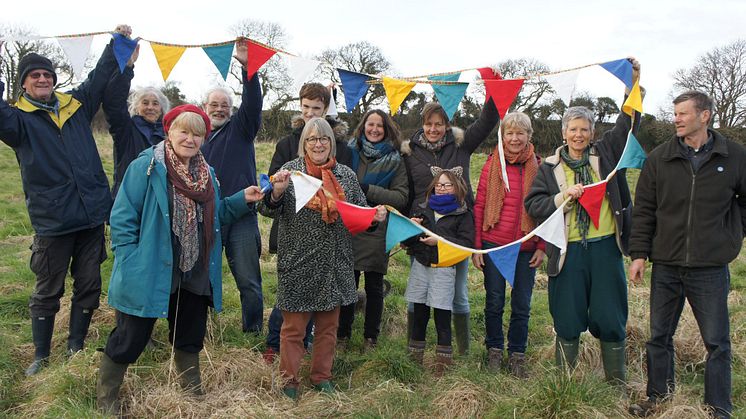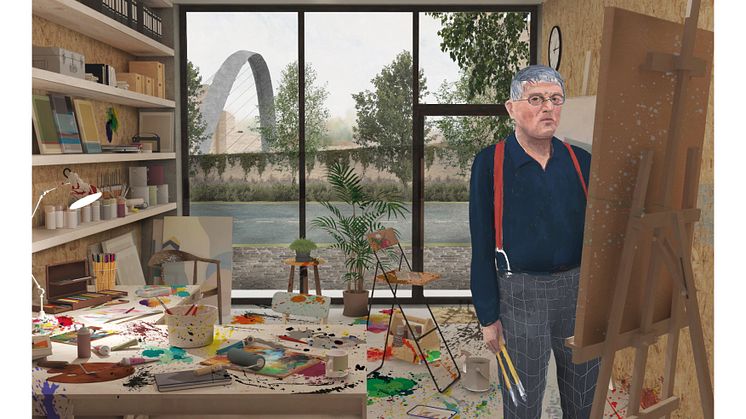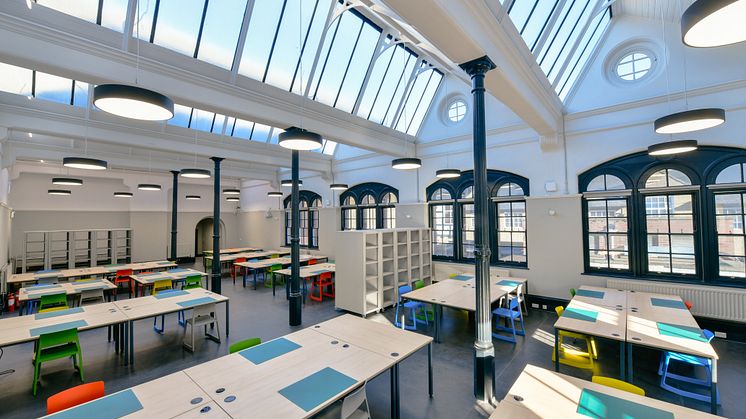Press release -
EXPERT COMMENT: Coronavirus: an architect on how the pandemic could change our homes forever
Writing for The Conversation, Dr Tara Hipwood, lecturer in architecture at Northumbria University, suggests that changes in commuting or work habits will prompt a fundamental shift in what people perceive as priority features in the home, with outdoor space and a home office high up the list in future.
Since the beginning of the COVID-19 pandemic, our homes have been serving as makeshift workplaces, schools, gyms and pubs. And many of us are spending more time in them than ever before.
People often choose to buy or rent their particular home because of its location – perhaps it offers access to good schools or an easy commute to work by car or public transport. This means people often invest in more expensive homes in locations with access to quality facilities and then adapt them to accommodate the activities of their daily lives.
As an architect and researcher in housing and sustainability, my research examines adaptations ranging from extensions and loft conversions, through to the installation of renewable technologies and retrofits. Many homeowners view their homes in desirable areas as a financial asset they plan later to cash in. For this reason, renewable and energy efficiency measures are often not included in adaptations, due to uncertainties about how these will be valued when they come to sell.
But with fewer people now commuting and more people working from home, where people choose to live and how they want their houses to function may change after this prolonged period of lockdown.
There have already been suggestions that people may want to escape city life and move to the countryside, with many longing for more space and better access to nature.
Goodbye open plan living?
It’s likely that for many families, this period has also highlighted that when they are all in the house at the same time, it can be hard to find any personal space.
A popular trend in recent years has been for open plan living. This often involves opening up several ground floor rooms to create a single, open plan, multi-functional space – usually a kitchen, dining, living, utility and work space. These open plan areas usually function on the premise that any homeworking parents can occupy this space during the day, before the family comes together to socialise in it in the evening.
This, however, relies on a “phased” pattern of occupation, whereby different members of the household occupy the home at different times of day. This is very different from the “concurrent” pattern of occupation – whereby all members of the household occupy the home simultaneously – that lockdown has made more prevalent.
Being able to supervise children while working may be beneficial for some. But for others, the lack of privacy afforded by these large, open plan spaces has no doubt presented challenges. Particularly when, for example, you might want a quiet corner in which to hold online calls. Self-isolating is also more difficult in such spaces, as is quarantining objects coming into the home.
Changing housing desires
It is likely that changes in commuting or work habits could also prompt a fundamental shift in what people perceive as priority features in the home.
People who regularly work from home use their heating far more to maintain a comfortable working environment. So an increase in the number of homeworkers could see a wider preoccupation with thermal comfort and the energy efficiency of their homes.
Homeworking could also bring many of the environmental considerations associated with workplace productivity, such as indoor air quality, noise pollution, and visual comfort, to bear on the domestic environment. This may lead homeowners to invest in measures such as triple-glazing or high-performance windows, increased insulation and draught-proofing – which would also lead to reduced CO2 emissions.
Research shows that for children, a comfortable, private space to study away from the communal areas of the home increases their educational attainment. So the preoccupation with the educational welfare of their children that encouraged parents to reside in proximity to high-performing schools may now be channelled into optimising their homes for study.
Natural light and self-sufficiency
A growing preoccupation with exercise and health could also see more people thinking about the impact internal environments can have on our well-being – prioritising natural light and access to nature. This could lead to reduced reliance on electrical lighting and greater demand for gardens that encourage biodiversity.
Food shortages in supermarkets at the beginning of lockdown have also resulted in a renewed interest in self-sufficiency, which may continue long after lockdown. This could lead to gardens being used for growing food, which would ultimately lead to a reduction in food miles. This could even lead to more people becoming interested in producing their own energy at home using solar panels or other renewables.
There could also be increased demand for new housing, particularly where the design of new housing responds to the new realities of home schooling and working, as well as a healthier, more self-sufficient lifestyle.
The experience of lockdown will, no doubt, have a lasting effect on us all. And many will be rethinking the kind of life they want to live post-pandemic, along with the role their homes could play in this.
This article was originally written for The Conversation.
Topics
Categories
Northumbria is a research-rich, business-focused, professional university with a global reputation for academic excellence. Find out more about us at www.northumbria.ac.uk --- Please contact our Media and Communications team at media.communications@northumbria.ac.uk with any media enquiries or interview requests ---










